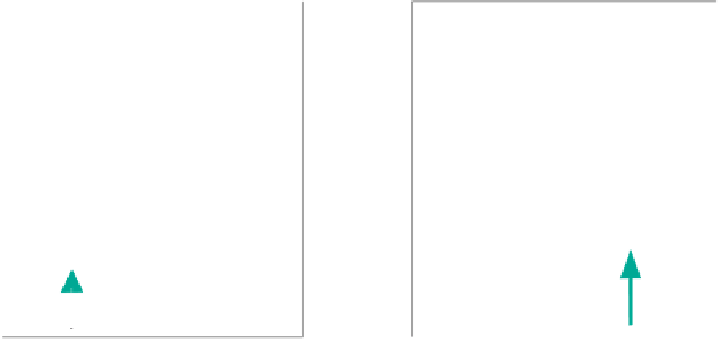Image Processing Reference
In-Depth Information
M
M
Fig. 10.12. The linear symmetry component,
I
20
, and the balanced directions component,
I
11
,
of the structure tensor add as vectors and as scalars, independently. The addition of numerous
structure tensors (
left
) for a merging of local images sharing a common direction, (
right
) for a
merging that largely lacks such a common direction .
shows the dominant direction of the image. We paraphrase this result as follows.
When the account of directions is finalized there is an excess of a single direction
that is not balanced by other directions. The net excess of this dominant direction is
as significant as the directions that are balanced.
10.8 Decomposing the Real-Valued Structure Tensor
Using its real form,
S
, the
structure tensor decomposition
in terms of linear symme-
try and balanced direction components is also possible [161, 225]. This is done by
the spectral decomposition of the tensor
S
S
=
λ
max
k
max
k
T
+
λ
min
k
min
k
T
(10.49)
max
min
followed by the rearrangement:
λ
min
)
k
max
k
T
+
λ
min
(
k
max
k
T
+
k
min
k
T
S
=(
λ
max
−
)
max
max
min
λ
min
)
k
max
k
T
=(
λ
max
−
+
λ
min
I
(10.50)
max
where the fact that
k
max
k
T
=
I
, when
k
max
and
k
min
are orthogo-
nal, has been used. The first term of Eq. (10.50) is the linear symmetry tensor, and
the second term is the balanced direction tensor in real matrix representation. When
merging two images, each consisting of balanced directions, the result is an image
that is perfectly balanced. Accordingly, adding the balanced direction components
of two arbitrary images will not result in a change of the linear symmetry compo-
nents. However, if two linearly symmetric images are merged the result usually has
+
k
min
k
T
max
min









































































